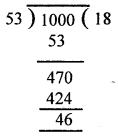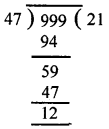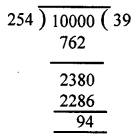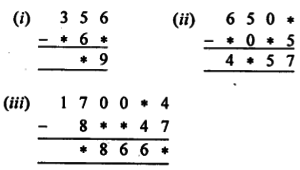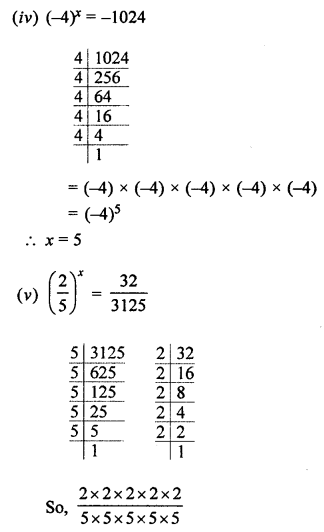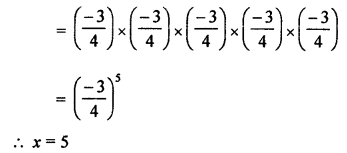ML Aggarwal Class 6 Solutions for ICSE Maths Chapter 1 Knowing Our Numbers Check Your Progress
Question 1.
Write the numeral for each of the following numbers and insert commas correctly:
(i) Six crore nine lakh forty seven.
(ii) One hundred four million seven hundred twenty two thousand three hundred ninety four.
Solution:
(i) 6,09,00,047
(ii) 104,722,394
Question 2.
Insert commas suitably and write the numebr 30189301 in words in Indian and International system of numeration.
Solution:
International system : 30,189,301
Three crore one lakh eighty nine thousand three hundred one Thirty million one hundred eighty nine thousand three hundred one
Question 3.
Find the difference between the place value and the face value of the digit 6 in the number 72601.
Solution:
Place value of 6
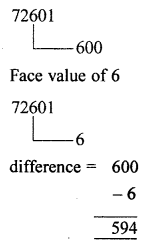
Question 4.
Write all possible two-digit number using the digits 4 and 0. repetition of digits is allowed.
Solution:
Possible digit numbers = 40, 44
Question 5.
Write all possible natural numbers using the digits 7, 0, 6. Repetition of digits is not allowed.
Solution:
The given digits are 7,0, 6 and repetition of digits is not allowed.
The one- digit numbers that can be formed are 7 and 6.
We are required to write 2-digit numbers.
Out of the given digits, the possible ways of choosing the two digits are
7, 0; 6, 0; 6, 7
Using the digits 7 and 0, the numbers are 70.
Similarily, Using the digits 6 and 0, the numbers are 60
Using the digits 6 and 7, the numbers are 67 and 76.
Hence, all possible 2-digit numbers are
60, 70, 67, 76
Now, We are required to write 3-digit numbers using the digits 7, 0, 6 and the repetition of the digits is not allowed. Keeping 0 at unit’s place, 3-digit number obtained are 670 and 760.
Keeping 6 at unit’s place, 3-digit number obtained are 706.
Keeping 7 at unit’s place, 3-digit number obtained are 607.
Hence, all possible 3-digit numbers are : 670, 760, 706 and 607.
All possible numbers using the digits 7, 0 and 6 are
6, 7, 76, 67, 70, 60, 706, 607, 760, 670.
Question 6.
Arrange the following numbers in ascending order:
3706, 58019, 3760, 59801, 560023
Solution:
3706, 3760, 58019, 59801, 560023
Question 7.
Write the greatest six-digit number using four different digits.
Solution:
Greatest six-digits number using four different digit is 999876.
Question 8.
Write the smallest eight-digit number using four different digits.
Solution:
Smallest eight-digit number = 10000023
Question 9.
Find the difference between the greatest and the smallest 4-digit numbers formed by the digits 0, 3, 6, 9.
Solution:
The greatest 4-digit number using 0, 3, 6, 9 = 9630
The smallest 4-digit number using 0, 3, 6, 9 = 3069
∴ Their Difference = 9630 – 3069 = 6561
Question 10.
Find the sum of the four-digit greatest number and the five-digit smallest number, each number having three different digits.
Solution:
Four digit greatest number with three different digits = 9987
Five digit smallest number with three different digit = 10002
∴ Their Sum = 9987 + 10002 = 19989
Question 11.
Write the greatest and the smallest four-digit numbers using four different digits with the conditions as given:
(i) Digit 3 always at hundred’s place.
(ii) Digit 0 always at ten’s place.
Solution:
(i) 9387; 1302
(ii)9807; 1203
Question 12.
A mobile number consists of ten digits. First four digits are 9, 9, 7 and 9. Make the smallest mobile number by using only one digit twice from the digits 8, 3, 5, 0, 6.
Solution:
The mobile number is 9979003568.
Question 13.
Two stitch a uniform, 1 m 75 cm cloth is needed. Out of 153 m cloth, how many uniforms can be stitched and how much cloth will remain?
Solution:
Total cloth 153 m = 15300 cm
To stich a uniform, cloth needed
= 1 m 75 cm = 175 cm
Total uniforms can be stiched = \(\frac{15300}{175}\)
\(=87 \frac{75}{175}\)
Hence, 87 uniforms can be stiched 75 cm cloth will remain extra.
Question 14.
Medicine is packed in boxes, each weighing 4 kg 500 g. How many such boxes can be loaded in a van which cannot carry beyond 800 kg?
Solution:
Weight of 1 box = 4 kg 500 gm
= 4 × 1000 + 500 = 4500 gm
Van can carry upto 800 kg
= 800 × 1000 = 800000 gm
Number of boxes that can be loaded in van
= \(\frac{800000}{4500}\) = 177.8 i.e. 177 boxes
A van can lc d 177 boxes of medicines.
Question 15.
Estimate : 6554 – 677 by estimating the numbers to their nearest
(i) thousands
(ii) hundreds
(iii) greatest places
Also point out the most reasonable estimate.
Solution:
(i) Thousands (6554 – 677)
⇒ 7000- 1000 = 6000
(ii) Hundreds (6554 – 677)
⇒ 6600 – 700 = 5900
(iii) Greatest places (6554 – 677)
⇒ 7000 – 700 = 6300
Estimation to their nearest hundreds is most reasonable.


